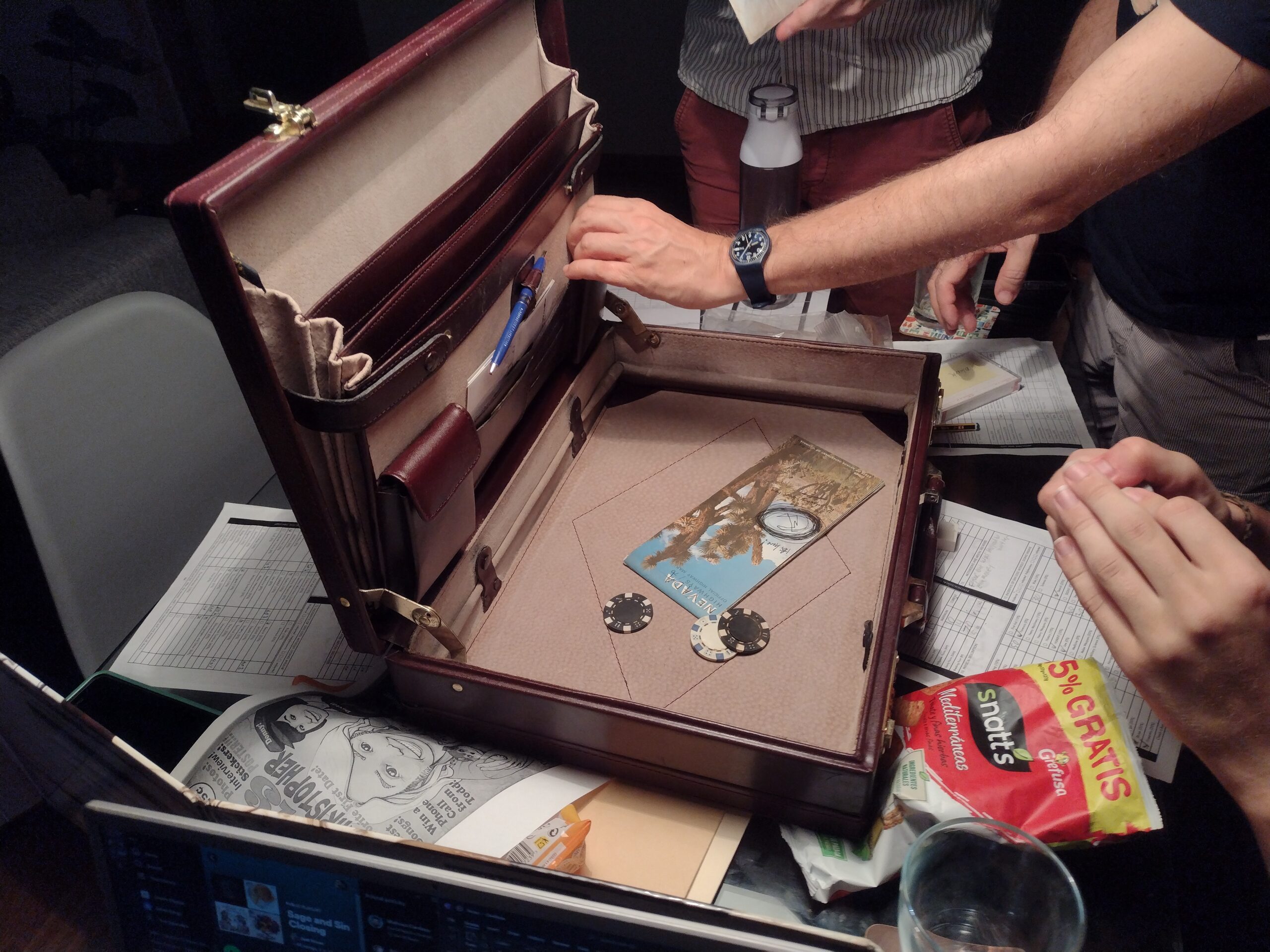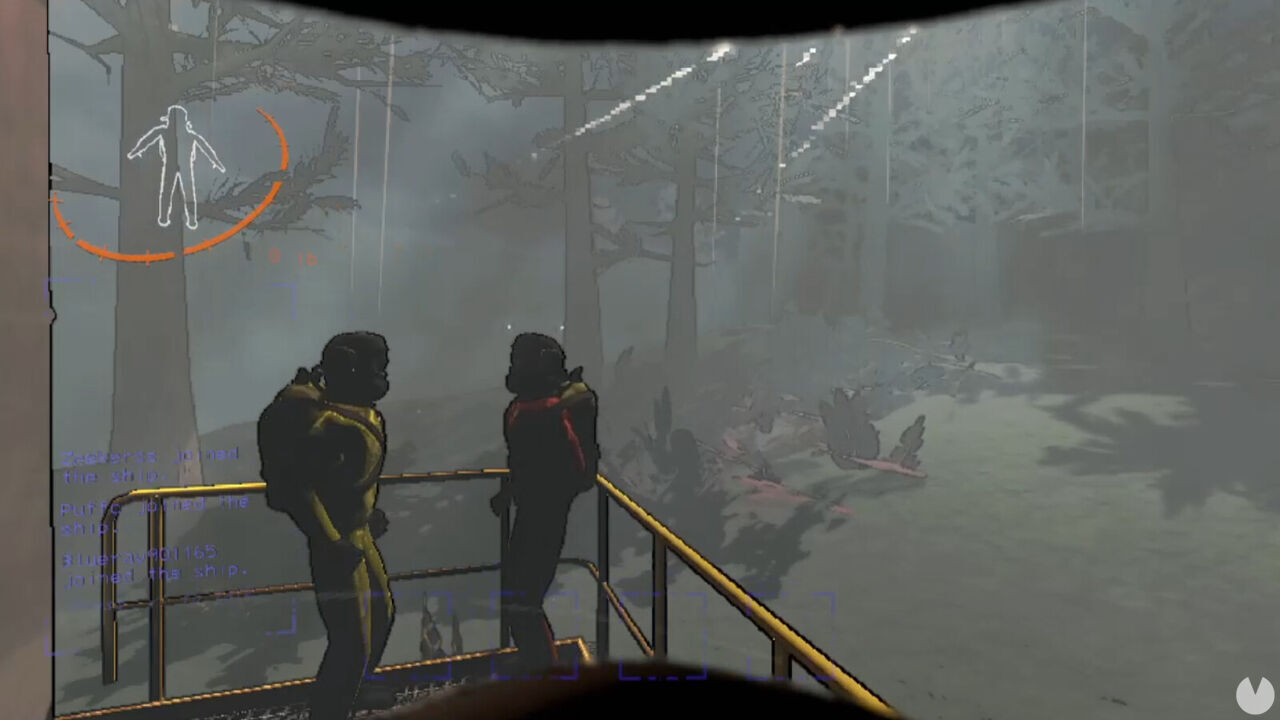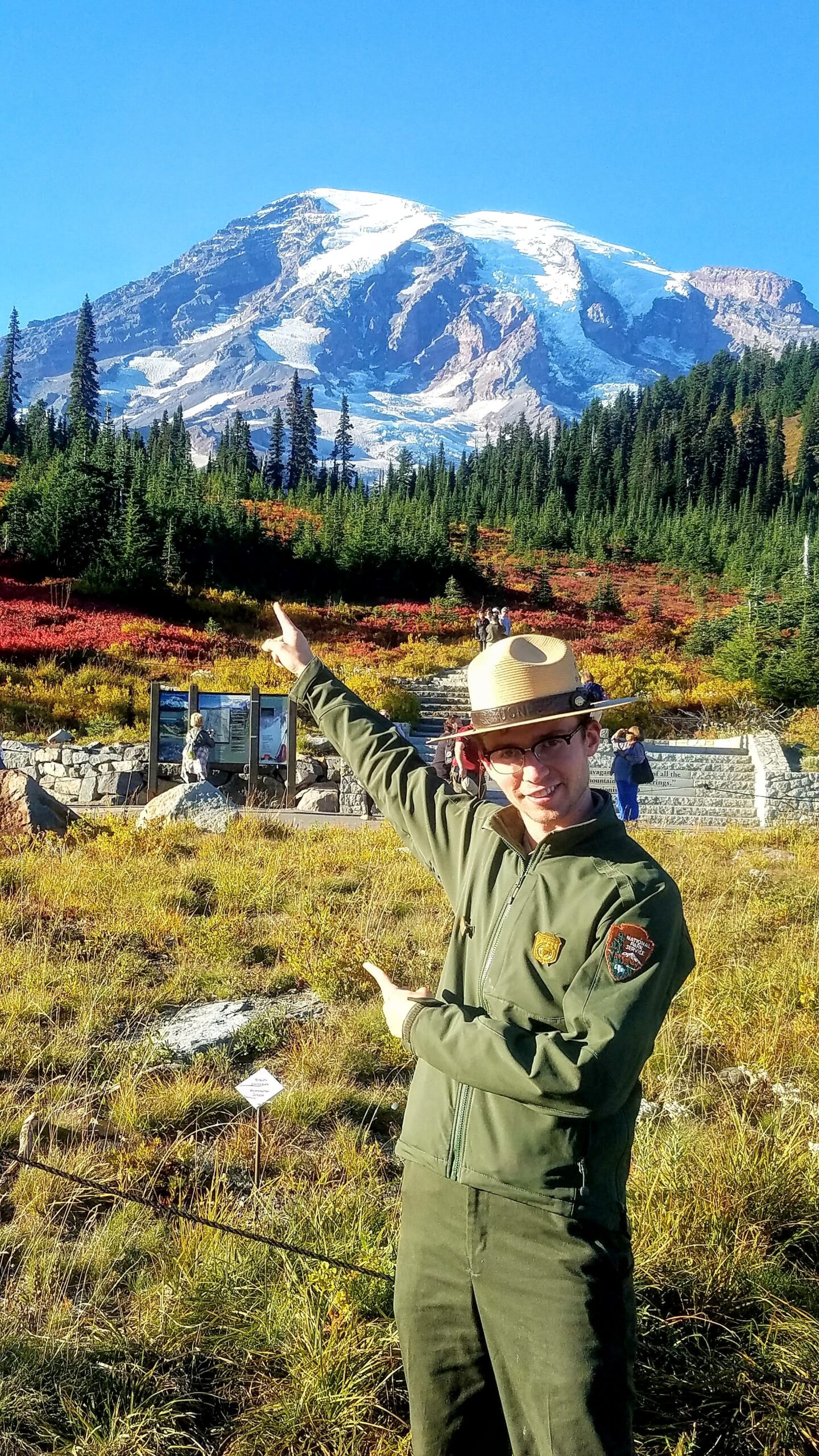
Ever feel like your players aren’t as deeply engaged in your game world as you’d like? Collaborate and build the setting together!
In my games I want players to know the background of the setting, have a general idea of what’s going on and how things work. It gives them context to make interesting choices and understand possible impacts. Knowledge is power. It increases their ability to act in the world by understanding its connections, helping them naturally immerse in its logic without constant non-diegetic lore dumps. One of the best ways to do this is to share your tools of world creation for the very first session.
The issue this addresses is that no matter how cool my lore is or how focused it is on encouraging interesting gameplay, players won’t be as into it as I am. The most engaging parts of the game are the parts a player directly interacts with or creates, through the act of playing the game.
In the past, I’ve made a series of detailed and but accessible intro briefing handout packets for multiple groups to try to give folks this information to help give context to the setting and have had at best 1-2 of the players really dig into it each time. It’s just not usually worth the time to invest to try to upload setting background into your players heads ahead of time.
As a player I also don’t usually enjoy reading a lot of lore that I may or may not be able to interact with. I can’t blame them, most of the times a GM has handed me a handout over a few pages to read before a game. I’ve felt at least some of it was extraneous to playing the game and interacting with the world.
Player’s don’t want to do homework for the game. Life is busy. The thing people care about most is their own actions and the results. That’s why all the RPG war stories that are the most memorable and fun stories people tell about games are about what their characters did in it and the impacts their crazy choices had. The longevity and viral spread of anecdotes like Tucker’s Kobolds, The Gazebo story, Sir Bearington, and other game tales isn’t just because they’re funny and digestible anecdotes, it’s because these speak to the promise of the game where players discover something by interacting with the GM’s world and something interesting happens as a consequence of their actions. The emergent and unplanned interactions between the two is where setting and character comes to life as more than dusty description but dynamic elements in an otherworld that can have a semi-magical feeling of existence to it.
When I’ve been cornered by a GM that wants to describe the setting of their world or a player talking about their character’s build and backstory without asking, it drains my life energy a bit. Even when I appreciate the passion they have for what they’re talking about, telling people about purely personal lore is like telling people about dreams or revelations from psychedelics, people generally don’t give a shit because by definition the specific texture and feeling of these experiences are deeply subjective and impossible for others to really relate to. Lore is a dead sterile thing until the person hearing about it gets to make interesting choices about how to interact with it through play.
Story games like Brindlewood Bay, Fiasco, and Microscope get around this by explicitly breaking open the GM’s toy box and giving worldshaping tools to all the players as they create the story of the game collaboratively throughout a session. The joys of creative power to shape the narrative is spread to all the players while encouraging improv and stopping a GM from railroading or burning out by doing days of background prep that may or may not actually be relevant to the game as everyone discovers what the reality of the world is through playing it. I really have a blast with these types of games but it’s not my preferred format.
I also appreciate the joy of secrets and discovery when playing in RPG’s, of getting surprised by something that feels like it was there independently of my or the weird stuff that happens from emergent properties of the world outside of what is narratively satisfying. As a player, if I get to enjoy the GM style thrills of creating the true identity of the murderer or the contents of this treasure chest I don’t get to enjoy the feeling of finding out from an external source and as a GM I can miss watching my players enjoyment as they discover something unexpected. I dig the feeling of being an explorer in an otherworld with its own kind of base reality. When I get to change the base reality too much in the player role, it can take me out of it a bit and remind me that we’re just playing a game and of course it’s all just made up. I like getting into the illusion of being in a realm with some kind of objective reality just like ours does, treating the fantastical situation my character is in as if it was real to them.
So how can we give players both the joys of setting narrative creation and the joys of discovery in a mysterious world? Let them make the game world with you in the first session! They get to enjoy helping create a setting that is personally interesting and engaging to them and then return to the more limited perspective of the player character. There are still secrets to discover, and events that occur throughout the length of the game. The difference from the traditional wholly GM created setting is that from the very first game without any extra reading or homework, your players are familiar, connected, and more deeply engaged with the background lore of the world because they made it. There’s several sweet games and blogs that have fun collaborative worldbuilding procedures and I’ve cobbled together my process from a few of them.

My Collaborative World Building Process:
Sources: Beyond the Wall: Further Afield, Microscope, Dungeon World: The Perilous Wilds, Build Your World- Yochai Gal, Worldbuilding as Team Support- Prismatic Wasteland
Materials:
Blank sheet of paper or other writing surface, bigger is better.
Pencils and erasers (or markers if you’re using a big whiteboard. You can also do this online on a shared whiteboard page through Discord, Microsoft Whiteboard, or your VTT of choice.)
Steps:
- Go around the table with introductions and ask for something you enjoy about playing RPG’s. This is more for new groups to each other but it’s fun and useful to hear what your longtime friends specifically dig about gaming. The GM or a nominated player should make sure to take notes of everyones contributions throughout the process so there’s a record of the collabertive setting framework after this is done.
- Explain the one sentence concept for the game as the GM. This is a good time to set the scope. Is this on a lost fantasy continent? A star sector around a black hole? An island chain after an apocalypse? An ancient underground megastrucure? Keep this super brief and open, this isn’t the time to have a bespoke premise you’re married to as it limits things too much or might not fit the setting that emerges from the end of the process. Note that you are also a Player and will contribute as well anytime the process has all the players add an element so don’t feel like this is the only place you’ll get creative input.
- Using the Palate concept from Microscope by creating a list of elements players can Add or Ban. Each player says anything they want to Add or Ban from the setting. This gives some initial colors for the palate (yeeah!) that we’ll be painting the world with. Do a round of turns for everyone at the table twice. Generally Add things you want but think others wouldn’t expect in the setting and Ban things you don’t want but think others would expect in the setting. Players discuss their picks, everyone should dig the Adds and Bans that are here and have a consensus this is a fun list to play.
- Each player adds one Truth of the Known World. These are simple statements of 1-2 sentences from each player that are absolutely true about the world and help define it. The GM asks some followup questions to the player and takes notes to have some inspiration fuel to expand on these later.
- Go around the table 1x and each player outlines a Region. They draw a boundary shape around an area on the map and name it, which can be a political region or geographical terrain. Describe it in a few sentences.
- Go around the table 2x and every player marks a Major Location on the map and names it each go round. This could be any type of interesting location to have in the world where some kind of adventure could happen. Give a few sentences describing the place. If players are stuck or GM wants to encourage specific varieties of areas they can have the players roll on a table to determine the type of area they’re detailing. For example, Beyond the Wall-Further Afield uses a 1d8 Table with 1. Major City, 2. Ancient Ruins, 3. Human Settlement, 4. Recent Ruins, 5. Inhuman Settlement, 6. Monsters’ Lair, 7. Source of Power, 8. Otherworld which I used this process before but any table of location types that fits the setting premise could work well.
- Go around the table 2x and every player adds a detail to someone elses Major Location or embellish upon it each go round.
- Go around the table 2x with every player drawing a connector like roads, tunnels, or rivers on the map between Regions or Major Locations.
- Pick a Starting Location on the map from the existing Major Locations or decide to place another together.
- Make an inset minimap or use another piece of paper for the Starting Location Map. Each player will place a Specific Place within the Starting Location depending on the Starting Location and describe it in a few sentences. A village, starport, bustling port city, slimy goblin cave network, or apocalypse vault will all have different types of Places.
- If there’s still time in the session, build characters together. Why are they working together? Where are they from on the setting map? It’s best to do this after you’ve got the world made as it helps make the process easier by providing background for making characters that fit the setting that everyone around the table already knows.
12. Done!*
13. Not you GM! You still have to do whatever your preferred style of game prep is and flesh out the part of the setting the players will initially be starting at and directly interacting with. Don’t do the same level of more detailed prep outside of the Starting Location and places they’re likely to go to in the first session or two unless you’re having fun with the process and not feeling burnt out.
Collaborative Setting Creation Overview:
Add or Ban Elements: Go around the table asking everyone for a pick, 2 per player
Truths of The World: 1 per player
Regions: 1 per player
Important Locations: 2 per player
Details to Important Locations: 2 per player on other players Locations
Add Connecters Between Locations: 2 per player
Game Starting Location: Players pick
Specific Places at the Starting Location: 1 per player
Disclaimer: With brand new RPG players, if you have an inconsistent cast of players coming and going in an open table, or if available play time is tight and the game is limited to a few sessions. I would probably skip this as it will take up at least most of a session.
It’s a fun worldbuilding activity but still less fun than actively playing the game for most folks. For people there for a single game I think it’s important to get people actually playing the game within like 30 minutes of sitting down at the table (or screen). I’ve heard too many stories of people turned off from RPGs for years because they spent 4 hours planning a game or flipping through books to create characters together the first time they tried.
Bonus Sci Fi Tweak:
Just make the locations whole planets, defined with a couple sentences. Build it on a hex map if you’re running something like Traveller or Stars Without Number. Mothership works fine on a blank page with connecting jump lines and distances added as part of the process.
Example from Real Players: Land of Yorth
This is messy, partial, and has typos as it’s my actual hasty notes from recording player input and running a basic version of this process live. I’ve made changes to the premise and massive additions but this formed the core framework of a setting I’ve played with six different game groups over years of play and now use as my default home fantasy campaign setting. Thanks Dani, Rayne, and Alex for planting these seeds with me. A loose scribbled setting outline with player input like this can lead to years of fun.
Setting Truths:
- We live in the shadow of a great civilization that has fallen, things used to be better.
- There’s a great war happening in the distance
- Dinosaurs and amphibians/large reptiles
- There’s no widespread concrete proof of the specific nature of gods or their existence.
- The Ancient’s grasp exceeded their reach and thus weird magic and strange critters.
Regions:
1. Land of Spikes and Pits. Exceptionally hostile, foilage struggles to growth. Ancient warzone, pools of toxic liquid. The Wasters are the only ones who know the ways. Undetonated minefield things. Killer machines that rip flesh off. Rust Red dirt.
2. The Weeping Swamp: Very hot, called weeping because trees leak and sap everywhere. Known for huge amphibians and slugs. Often very foggy.
3. The Drake Marches: It’s separated by a mountain range that scrape the sky and dragon warlords and their cultist followers always in combat. Like Siberia
4. The Fallow Fields. Ancient overgrown and untended vineyards and farms for miles. Agricultural autonoma still trying to do their jobs in the fields and often threatening. Feral overbred livestock. Vegetables that eat humans. A group that claims to be the heir to the Ancient Empire dwells among the fields in ancient buildings turned into fortifcation.
5. The Thorne Woods: Dinosaurs, brambles, ferns
Major Area
1. Lost City of Arkon. It is like a maze inside. The walls and the streets and the streets even move. It’s a former port city of the ancients. An ancient ship and it still guards the port to this day. Ghost ship or magical steam ship?
3. The Port of Spoota. City of glass trade and spices. Everyone walks giant bearded dragons. Walled city with nice oasis, water. Rich as hell, sick gems. Music and food in the streets. It is NICE. More hirarchy. All of their structures is glass, super strong glass in a variety of colors. Weapons made of very sharp hard glass. Independently invented, ubiquitous technology.
Accuracy 20: Right on! Bonus information
5. The Bronze Tower. Big Tower that goes up to the sky, linked to the ground by enormous chains. Dead settlement at the base. All sorts of remains and mutated former residents. Something is in it.
7. The Smoking Basin. Volcanic ruins of an ancient dwarven citadel.
9. The Three Sisters- Major waypoint with trade for Spoota. Goods travel through there, trading stronghold. Culturally made up of folks from distant lands. Anything goes! Seabeasts in the area. Densely populated one seedyish. Rocky crags. C.R.E.A.M. Legendary sea monster sleeps for many years before rising once more. Serpentine monster like an underwater dragon. Hasn’t risen in over a century.
11. The Absence of Wealth: Former enormous pit mine spanning over 10 miles, riddled with sinkholes, industrial machine. Tons of ancient tools, equipment and wierd, and iron. People living along the sides of the pit and inside some of the still former equipment.
12. Rocky Death- Kalodon the Unkillable, an enormous scarred t-rex. In the middle of the forest a huge cave filled with mini ecosystem lairs within.
14. Citadel of the Lizard Regent. Lizard society is genderless, bloodlines important. The clans have been recently unified under the Lizard Regent.
Starting Location
Arro’s Stand: Nobody knows who Arro is. An Arosi is someone from there.
Arro’s Rite: Rite of passage once a year to bring back a successful big hunt to the village.
The Village: Rocky, wastey, rabbits, agave, and edible big lichens. Occasional ambulatory vegetables.
Hell’s Kitchen: Out of an old tower ruin, exiles from another plane. Human attitude, currency, red demon person sized. Grumpy, I hate Mondays. Townsfolk, reacted with fear and now regard with nonchalance. Shazira, goes by Shaz.
Scrapyard and bits and bobs, run by one of the people from land and spikes and pits. Hand cranked macerators, accumulated. You pick through. Zakephron the gobliny, hairy scrapmaster.
Ancient Bathhouse- poorly maintained but still works, based on some hot springs. Quiet Old Lady, nobody knows her old age. Mama Gams.
Town Militia: Big spikey wall with crossbows, on top of steep mesa with windy single wide path going up, used to be a fortress.



















